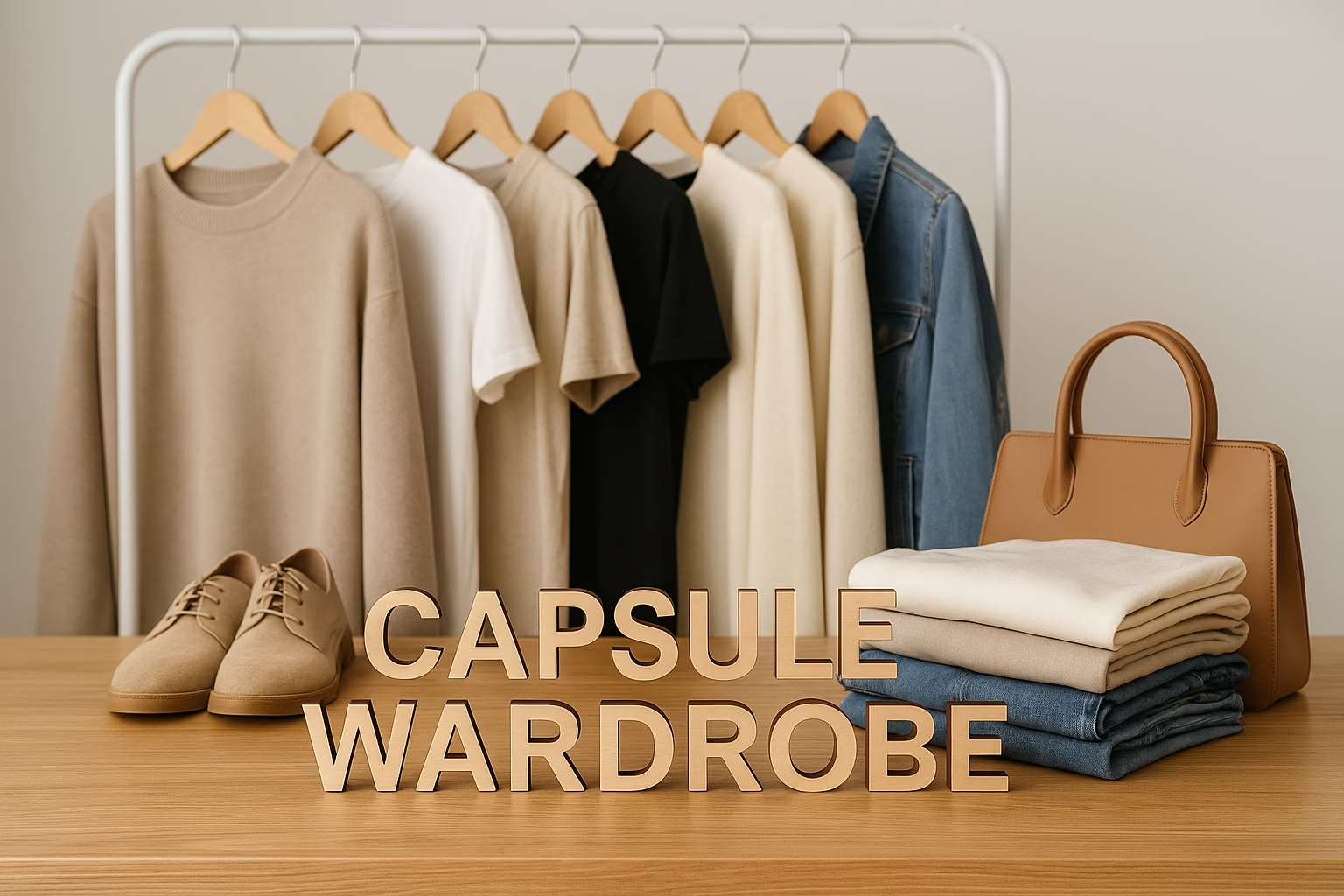Building a minimalist capsule wardrobe is more than a fashion trend—it’s a lifestyle choice that promotes simplicity, sustainability, and financial freedom. If you’ve ever felt overwhelmed by a closet full of clothes but still struggled to decide what to wear, you’re not alone. A capsule wardrobe can help eliminate decision fatigue, save time and money, and reflect your personal style with intention.
In this article, you’ll learn step-by-step how to create your own capsule wardrobe, including what to keep, what to let go, and how to shop smarter moving forward.
What Is a Capsule Wardrobe?
A capsule wardrobe is a curated collection of essential clothing items that are timeless, versatile, and easy to mix and match. The goal is to own fewer pieces that can be combined in multiple ways, creating stylish outfits without the clutter.
Instead of buying into every seasonal trend, a capsule wardrobe encourages intentional choices based on your lifestyle, preferences, and values.
Why Choose a Minimalist Approach?
Choosing a minimalist capsule wardrobe comes with several benefits:
-
Saves Money: You avoid impulsive shopping and focus on investment pieces.
-
Saves Time: Less time spent choosing outfits in the morning.
-
Reduces Clutter: A streamlined closet is easier to maintain and more peaceful.
-
Promotes Sustainability: Fewer purchases mean less waste and a smaller carbon footprint.
-
Boosts Confidence: Wearing pieces you love and that fit well enhances your self-image.
Step 1: Assess Your Lifestyle and Needs
Start by reflecting on your daily routines and what types of clothing you actually need. Think in categories such as:
-
Work attire (formal or casual)
-
Weekend and leisure wear
-
Fitness clothes
-
Special occasions
If you work from home, you might need fewer business clothes and more comfortable, stylish basics. Tailor your wardrobe to your reality—not to fashion trends or someone else’s lifestyle.
Step 2: Declutter Your Current Wardrobe
Go through your closet and remove everything. Then, sort items into four categories:
-
Keep: You love it, wear it regularly, and it fits your current lifestyle.
-
Maybe: You’re unsure—set these aside and reassess later.
-
Donate/Sell: Still in good condition but not serving you anymore.
-
Recycle: Damaged or worn-out pieces that can’t be reused.
Be ruthless but thoughtful. If you haven’t worn something in the past year, it’s probably time to let it go.
Step 3: Define Your Color Palette
Choosing a cohesive color palette is key to a capsule wardrobe. Neutrals like black, white, beige, gray, and navy are versatile and easy to mix. Add 2–3 accent colors you enjoy wearing for variety.
This makes coordinating outfits faster and keeps everything looking harmonious.
Step 4: Identify the Essentials
Every capsule wardrobe should include foundational pieces. These vary depending on your lifestyle, but common staples include:
-
2–3 pairs of jeans (one dark, one light, one black)
-
3–5 tops (tees, blouses, button-downs)
-
1–2 blazers or jackets
-
2 sweaters or cardigans
-
2 dresses or skirts
-
2 pairs of comfortable shoes (e.g., flats, sneakers)
-
1–2 bags (one casual, one formal)
-
Undergarments and sleepwear
Keep quality over quantity in mind. It’s better to own one perfect pair of jeans than five mediocre ones.
Step 5: Shop Intentionally
Now that you’ve identified gaps in your wardrobe, create a focused shopping list. When buying new items:
-
Look for versatile, high-quality pieces.
-
Stick to your color palette.
-
Consider how the item will work with what you already own.
-
Avoid buying duplicates.
-
Choose sustainable or ethical brands when possible.
Shopping becomes less about trends and more about value, function, and longevity.
Step 6: Practice Outfit Planning
Take some time to experiment with combinations. Lay out different outfit ideas using what you have. Apps like Cladwell or Smart Closet can help you digitally organize and visualize your wardrobe.
Planning outfits in advance saves time during the week and helps you see your clothing in new ways.
Step 7: Maintain and Rotate Seasonally
Capsule wardrobes are not static. At the beginning of each season, revisit your items:
-
Swap out seasonal clothes (store winter items in summer, and vice versa).
-
Repair or replace worn-out pieces.
-
Reassess whether items still serve your needs.
This keeps your wardrobe fresh and aligned with your evolving lifestyle.
Common Mistakes to Avoid
-
Copying someone else’s capsule: Inspiration is good, but tailor it to your own life and preferences.
-
Going too extreme: Minimalism isn’t about deprivation. It’s about curation.
-
Keeping items “just in case”: If you haven’t worn it recently, you probably won’t.
-
Forgetting accessories: A good belt, scarf, or necklace can elevate any outfit.
Final Thoughts: Less Is More
A minimalist capsule wardrobe isn’t built overnight—but it pays off. By taking control of your clothing choices, you reduce stress, improve your finances, and build a wardrobe that actually works for you.
It’s not just about fashion—it’s a mindset shift. You’ll be amazed how simplifying your wardrobe can influence other areas of your life. As the saying goes, “Clarity begins in the closet.”
Ready to simplify? Start with what you have, define your essentials, and step into a more intentional way of dressing.

